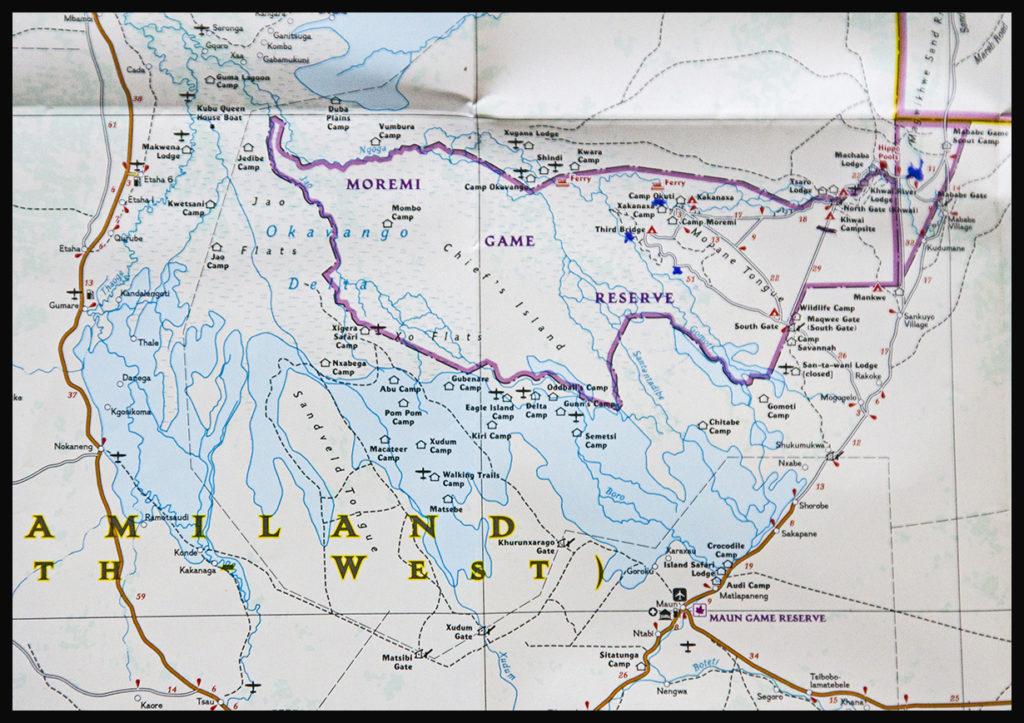
Okavango Delta map with Moremi outlined in purple.
Very little of the park is accessible by 4WD, if you can even call it that. Roads are mostly sandy and horrid, and during rainy season often too wet and muddy. The park’s excuse for total lack of maintenance is they want tourists to have the “real experience” of backcountry roads. Of course, more traffic means more degradation, and more by-passes. The situation will never improve, only get worse if they continue the hands-off policy. Oh well, not my problem. Our sturdy Toyota, and capable driver, made it through some nasty, deep, water-filled holes. Some self-drive people aren’t so lucky.
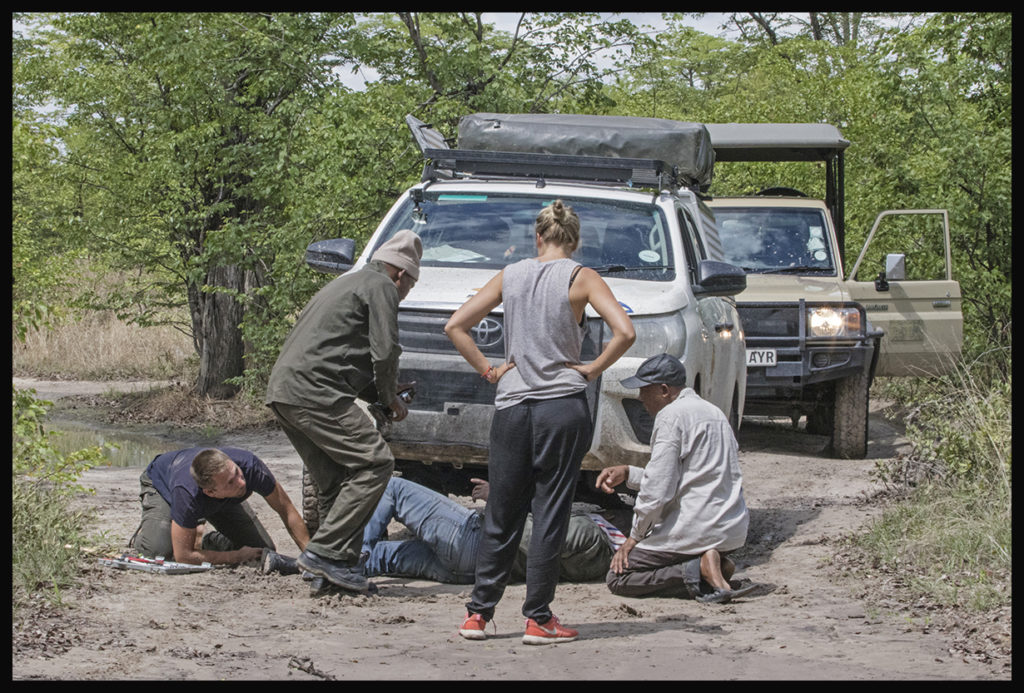
Oops! Big problem miles from anywhere. Lucky our staff was able to save them from big expense.
However, we wouldn’t have missed Moremi for anything. Wildlife is rife. Here we saw our first baboon troop, definitely not the last… they are so much fun to watch.
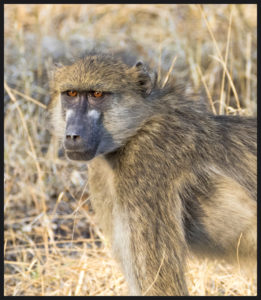
These are Chacma baboons, the only variety found locally.
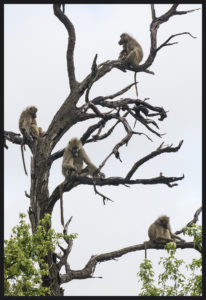
Baboons spend a lot of time in trees as look-outs.
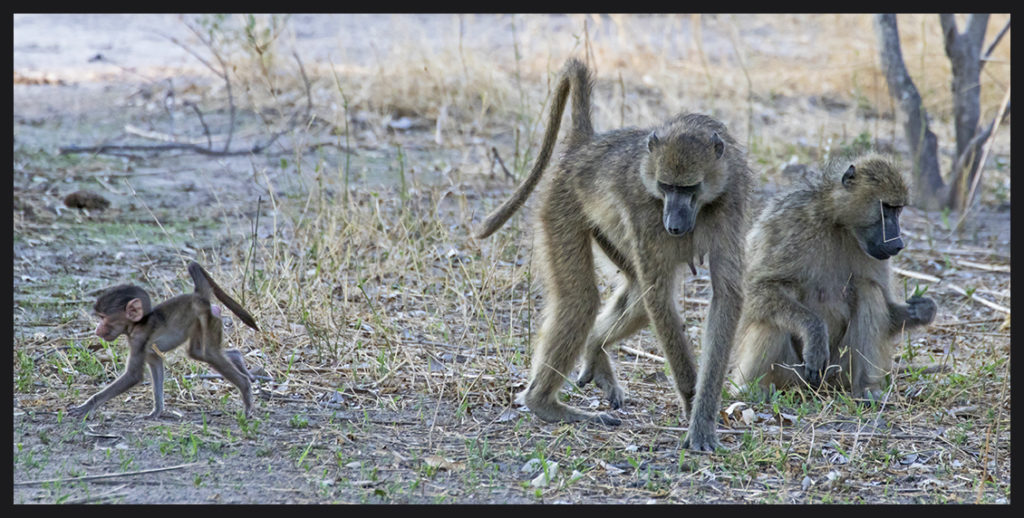

Various styles of catching a ride.
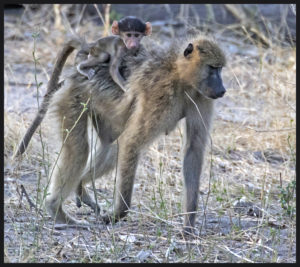
First cape buffalo, first ground hornbills…
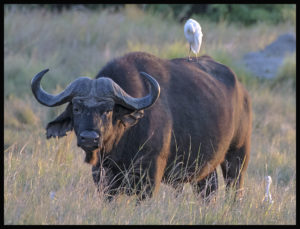
Cape buffalo with cattle egret attached.

Ground hornbill with hapless frog.
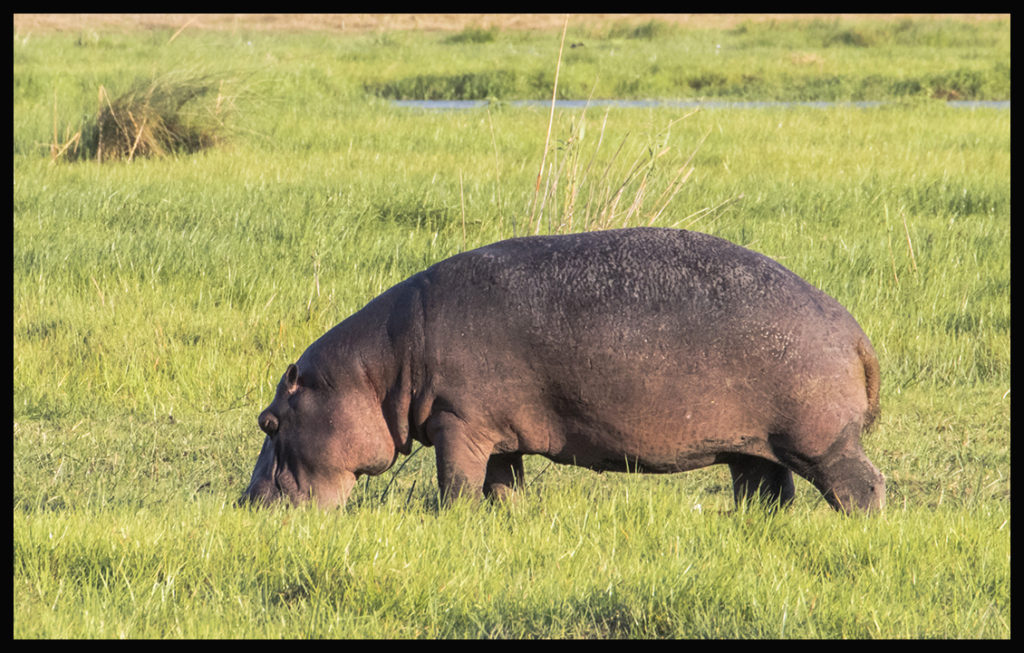
Large lawnmowers.
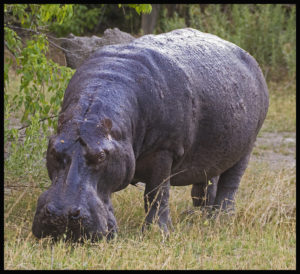
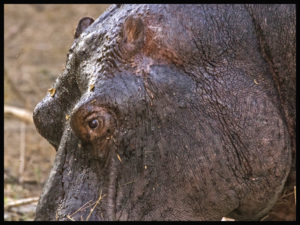
Very close giant.
First carmine bee-eaters…gorgeous summer migrants, and our first little bee-eaters.

Little bee-eaters
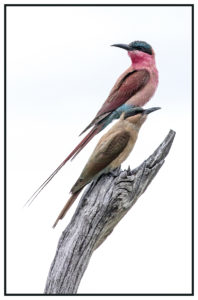
Carmine Bee-eaters
There are ponds filled with crocodiles and hippos, and surrounded with amazing wading birds. The birds seem rather nonchalant as the crocs glide by.

Very busy pond.

Purple Heron
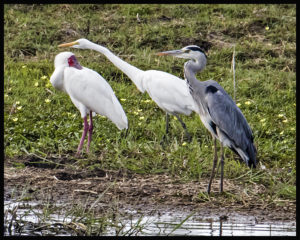
Heron, egret, spoonbill…the diversity was astounding.
Second day drive turned up 23 wild dogs resting in the shade. This is an endangered species, a third of the total population live in Moremi. They weigh from 55 to 70 pounds and are the most frequently successful hunters of all. The success rate is near 80%. They kill and eat quickly so a lion or hyena doesn’t steal their meal. The alpha male and female are the only ones that breed. All the rest of the pack helps raise the pups (from 2 to 16 per litter). Young eat first, adults later, unlike lions.

Pups act just like domestic puppies.

We came back in the evening to see what the pack was up to. They were just stretching and getting excited about the coming hunt. In minutes after forming their hunting line they had several impalas on the run. It all happened so fast it was hard to see, much less get a picture. We drove around the intervening clump of trees, and they had already divvied up the prey and taken it off to munch individually. Whole process less than 20 minutes. Meanwhile we watched one impala that escaped the dogs, jump into the river. They are poor swimmers and before it could thrash its way to the opposite bank, it was grabbed by a huge crocodile. Then another came to fight the first for the poor impala. What a heart stopper!
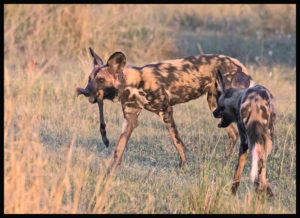
Adult with collar carrying off its portion.

Dogs have strong jaws for crunching bones.
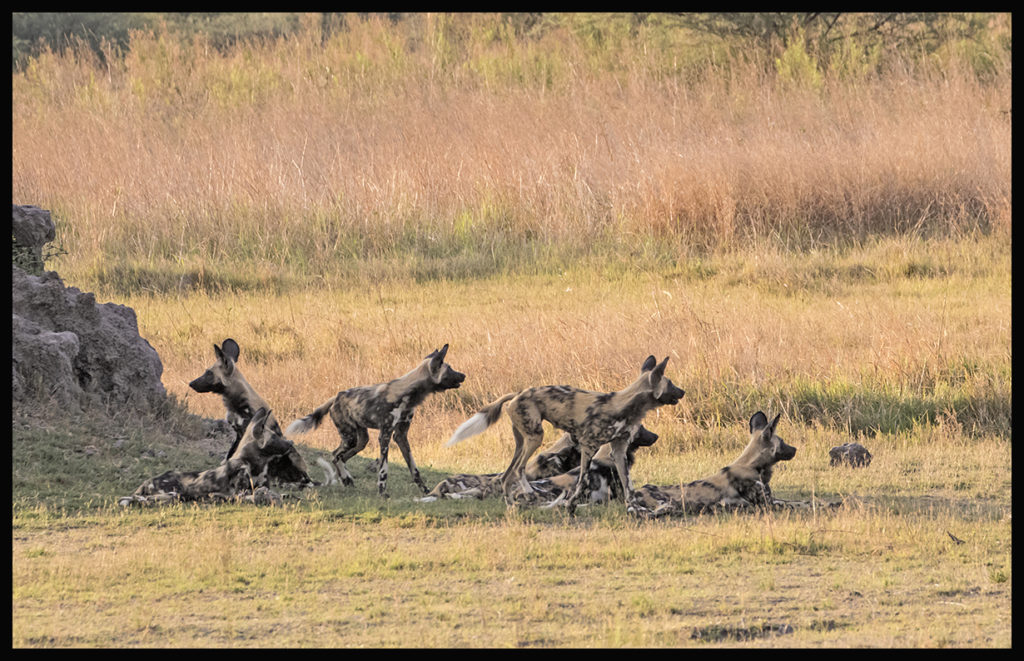
These are the pups watching the adults go off on the hunt.
For those impalas it was a bad day, but there are so many impala, they support a huge predator pool.
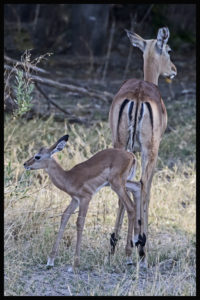
See the black stripes on the rear of the doe? The guides call the impalas, McDonalds.
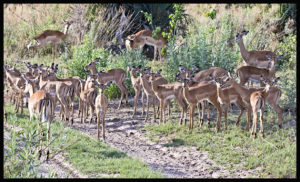
Impala kindergarten. There are so many impalas it’s hard to believe. It’s easier knowing they are such easy prey when it is obvious they are not endangered in the slightest.
So what else did we see? Lots.

Paradise flycatcher male at nest. That long tail trailing out behind as he flies is wonderful.

Female paradise flycatcher feeding chicks.
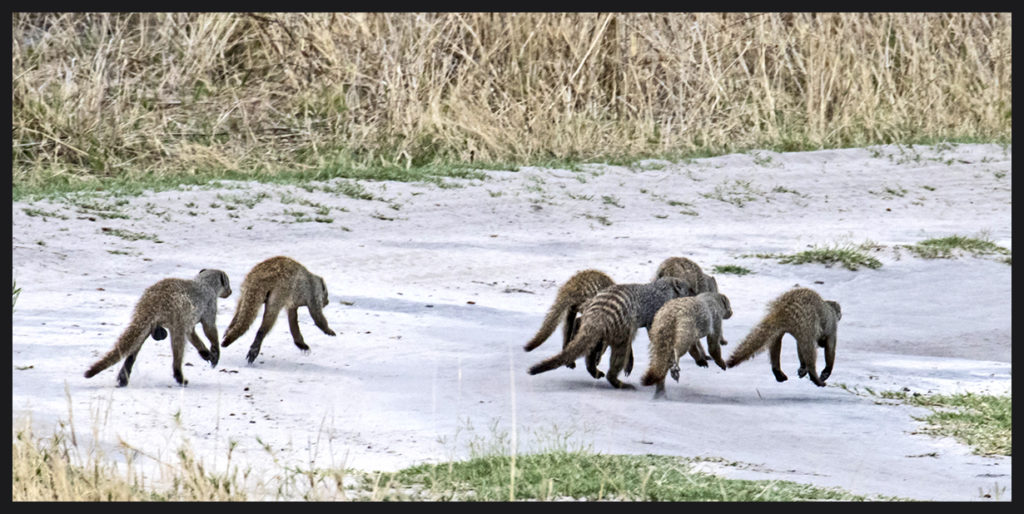
A business or busyness (depending on who you ask) of banded mongooses.
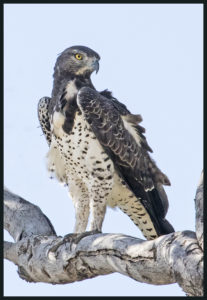
Martial Eagle. Somewhat rare and very large.

Tawny Eagle, light phase. These are not rare and come in various colors. Gorgeous eagles.
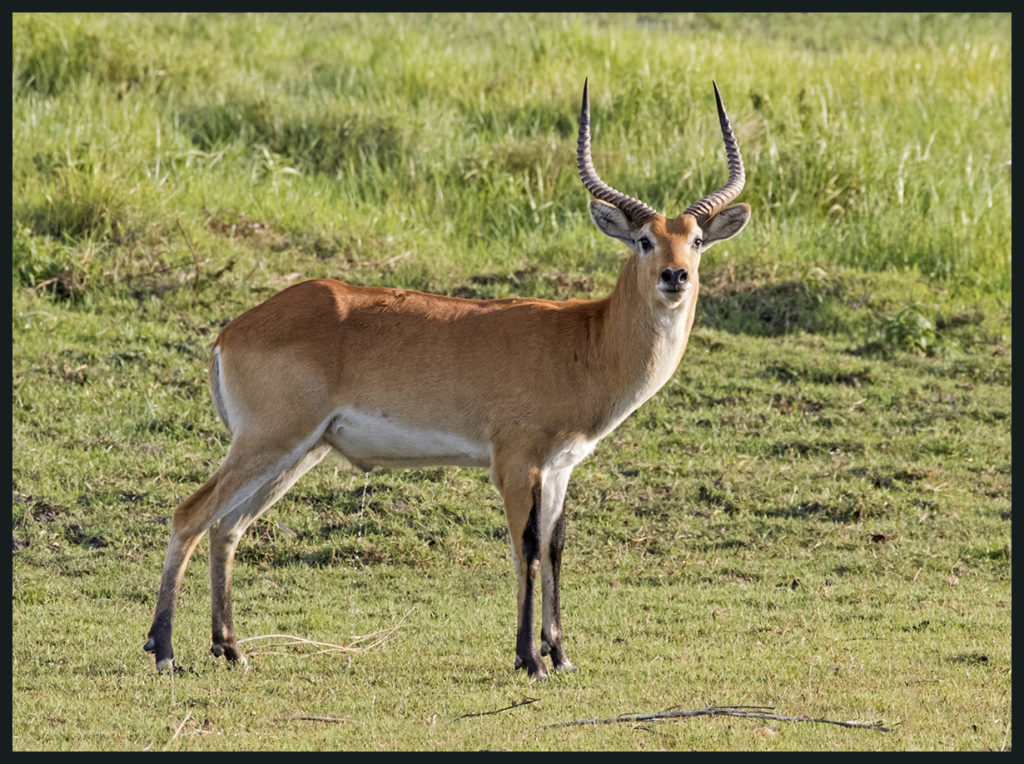
Red Lechwe male. These are called water antelope because they are adapted to watery environments. They have big feet and are good swimmers…crocs don’t often get them.
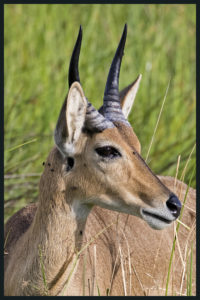
Reedbuck male.

Reedbucks were new ones. There are so many different kinds of antelope in Africa.

Marabou storks stand with wings out in the hot sun to air them and cook any insect pests. Their wing span can exceed 9 feet.
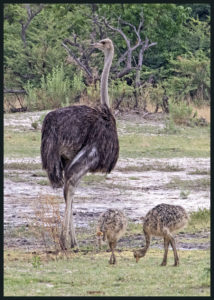
Female ostrich with only three chicks left out of a much bigger clutch. (Third out of frame).
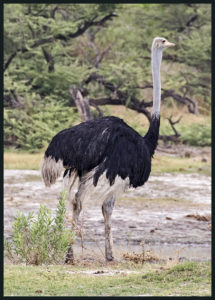
Male ostrich. While they are very good parents, and ferocious protectors, they still can’t protect all the young.

A second species of jackal live in the more wooded areas in the park, the side-striped jackal.
Next very exciting incident involved a leopard and a spotted hyena (two more firsts). In the morning we discovered a leopard resting under a bush. It moved off when it knew we saw it, into some thick bushes.
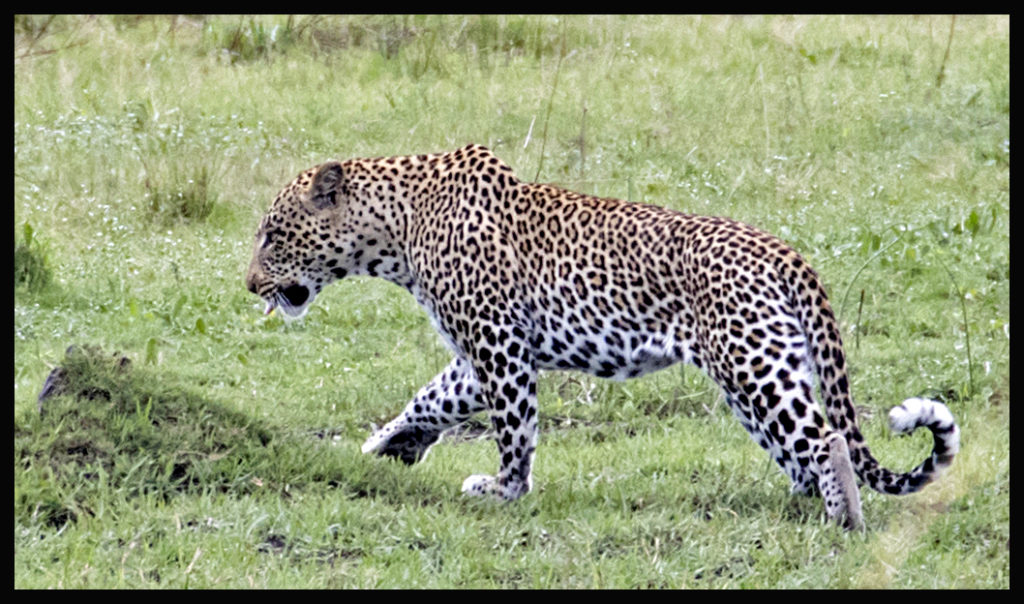
Our first leopard!
We returned in the evening as we had with the dogs to see what it was up to. We found a disgruntled leopard sitting in the road watching as a hyena devoured the leopard’s kill, an adult impala. The hyena’s belly was stretched to bursting, but it wouldn’t give up a morsel. Two jackals were yipping at the hyena and the leopard. An eagle was on the ground waiting with the jackals for a bite. Finally the leopard had enough of the yipping jackal and took off after it, but the jackal was too quick. In the meantime the hyena picked up what was left and hauled it off leaving the leopard with nothing. We felt sad for the leopard who had done all the work and taken the risk of injury.
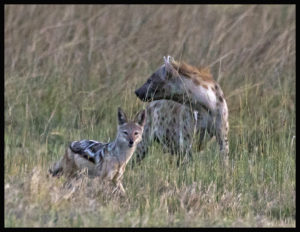
Spotted hyena and black-backed jackal.
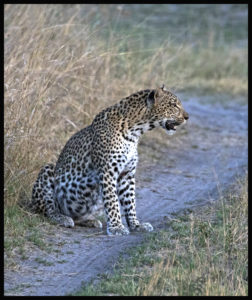
Disgruntled leopard.

Hyena gorging on leopard’s kill.

Enough for the first area of Moremi. More to come.
Again, I am attaching a short video of the stars in this chapter.
